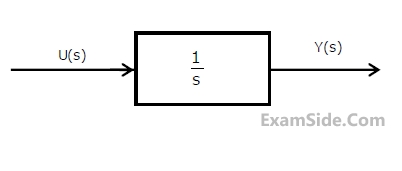Signals and Systems
Miscellaneous
Marks 21
GATE EE 2013
MCQ (Single Correct Answer)
+1
-0.3
The impulse response of a system is h(t) = tu(t). For an input u(t − 1), the output
is
2
GATE EE 2013
MCQ (Single Correct Answer)
+1
-0.3
Two systems with impulse responses h1(t) and h2(t) are connected in cascade.
Then the overall impulse response of the cascaded system is given by
3
GATE EE 2013
MCQ (Single Correct Answer)
+1
-0.3
Assuming zero initial condition, the response y(t) of the system given below to a
unit step input u(t) is


4
GATE EE 2011
MCQ (Single Correct Answer)
+1
-0.3
A low–pass filter with a cut-off frequency of 30 Hz is cascaded with a high-pass
filter with a cut-off frequency of 20 Hz. The resultant system of filters will function
as
Questions Asked from Marks 1
GATE EE Subjects
Electromagnetic Fields
Signals and Systems
Engineering Mathematics
General Aptitude
Power Electronics
Power System Analysis
Analog Electronics
Control Systems
Digital Electronics
Electrical Machines
Electric Circuits
Electrical and Electronics Measurement